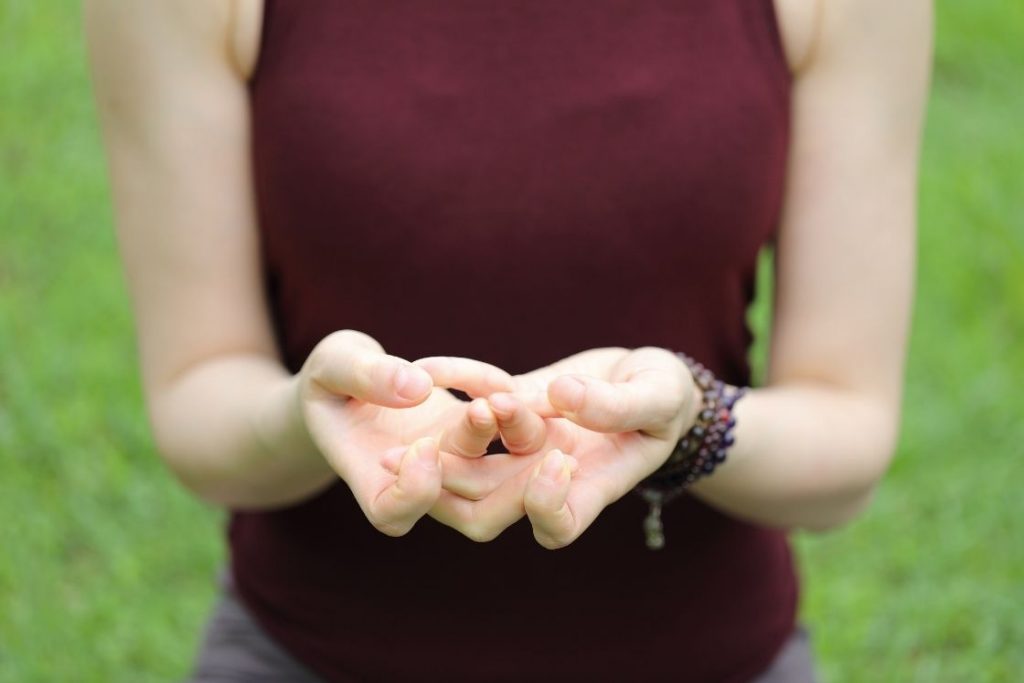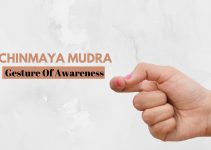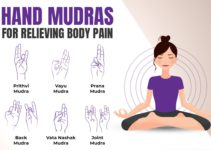
If you’ve been practising yoga, meditation, and pranayama for some time, you must have come across various mudras. Mudras are seals or symbols that represent or lead to various states of consciousness of your being.
Yoga mudras are often used for their therapeutic or healing powers. Specific finger placements can bring about a balance or change in the way your doshas work. They are simple enough to be practiced anywhere yet complex when it comes to their effects and benefits.
In this article, we have addressed some common queries that are often asked regarding mudras. We hope that it will solve most of the doubts or misunderstandings you may have had or give you knowledge which you didn’t know was needed.
Can we do mudra while walking, laying down, or standing?
You can perform most of the mudra in any position – sitting, standing, lying, while doing pranayama or even while walking. The condition is your body should be relaxed, centered, and well-aligned. The role of body posture in mudra practice is to assist the hand gesture; if you’re comfortable holding hand gestures in any other position than sitting, then it’s fine to do with it.
If you want to practice a mudra while laying down (probably mudras for sleep), make sure your back is placed in the most comfortable way. Place a pillow under your head and cushion under your knees or thigh for extra comfort and alleviate any strain. In this position, you can put your hands (with mudra) either on your stomach (on navel) or beside your hips. However, if necessary you can move your arms and hands freely, as long as, you keep awareness on your breath.
For practicing mudra in a standing position, keep your legs shoulder-width apart. Your knees should be relaxed and feet firmly placed on the ground with toes pointing forward.
For doing a mudra while walking, you should move in a rhythmic yet calm manner. Do not perform a mudra if you are in a hurry or distracted as it may disrupt the hand mudra itself.
How long does it take for mudras to work?
There is no set duration to determine how fast a mudra can work. In cases of mood swings, you may immediately see the effects by doing meditation mudras.
Usually, yoga mudras start showing the effect in 4 weeks when done consistently. If you’re going through some chronic diseases, it might take some months. Mudra’s working efficiency depends on your practice consistency and the current physical condition.
Can we do mudras daily? How many mudras can be done in a day?
Since mudras can be performed anywhere, it is certainly allowed to practice them daily. But this doesn’t mean that you keep switching between mudras throughout the day. You will not be able to get the benefits of each mudra as you not giving time for it to work.
First set your intention. Focus on what symptoms you want to mitigate. It may be one of the five elements that are causing havoc. Select one or two mudras that you think will be able to balance the respective elements and the energy flow. Practice these mudras whenever you get time or device a schedule.
Can we do mudra at any time?
Hasta Mudras are simple hand gestures that do not require an elaborate setting or many props. You can practice them anytime and anywhere. You have the liberty to practice any mudra even if you are stuck in traffic, watching TV, standing in a line, or waiting for the bus.
However, you have to make sure that you are able to self-reflect, withdraw yourself and focus on your breathing. Your mood should be calm and harmonious so that the energy flow within your body is not affected in a negative way.
So as long as you can cut off from the real world and come in a meditative mood, you can practice mudras even in the noisiest of the places.
How long we should do mudra?
You can hold a mudra for 15 minutes if you are practicing it 3 times a day. Or else you can practice it for 45 minutes at a stretch. Use a stopwatch to time your mudras.
As soon as you see that the symptoms have been alleviated, stop practicing the mudra immediately. This is mostly meant for mudras that you are practicing for acute complaints such as respiratory or circulatory problems.
These durations are not set in stone. The timings can be adjusted as per the effects of the mudra. Overtime, you will automatically notice that your fingers will respond to the mudra instantly. So at a later stage, you may feel that only 5-10 minutes are sufficient, which is completely normal.
Can mudras be done after eating?
Ideally, you can practice mudras at any time of the day, even before or after a meal. However, it is advised that you give to maintain a gap of 2-3 hours between your meal and mudra.
When your digestive system is at work, it requires extra blood and energy circulation to function properly. If you immediately perform a mudra after your meal, it may disrupt this flow, which will further give rise to other digestive issues.
You can do the Pushan Mudra in vajrasana after eating which is known to improve digestion and elimination process. It consists of two different gestures that are simultaneously performed with both hands.
- On the right hand, the Apana Vayu Mudra is held by touching the tips of your index finger, middle finger, and thumb.
- On the left hand, the Prana Vayu Mudra is practiced by touching the tips of the middle finger, ring finger, and thumb.
Can we do mudra during periods?
Menstruating women can also perform mudras but they should be careful in selecting the mudra. Not all mudras are beneficial during periods.
In menstruation, women should practice mudras that encourage the downward movement of energy. This will help them in healthy elimination and reduce period pain or other reproductive cycle problems.
Apana Mudra is one such mudra that encourages downward flow. It is performed by joining the tip of the thumb to the tip of the middle and ring finger.
Maha Sacral Mudra is a set of 2 hand mudras that will be extremely beneficial in countering the menstrual pains and issues related to menstruation. It is performed by joining the tips of the ring fingers of both hands and then joining the tips of the thumbs to the little fingers.
In both cases, you need to place the mudra in front of your navel.
The Surya Mudra is also often recommended, however, since it is a fire element increasing mudra, it should be done in moderation during the menstrual cycle.
Can mudras be done with one hand?
You can practice mudras with one hand if you are suffering from injury, have undergone surgery, or have any other medical ailment. However, in some pranayama practices, only the hand in mudra is incorporated.
One of the best examples of using one hand mudra is Nasagra Mudra which is used in the practice of Nadi Shodhana pranayama (alternate nostril breathing).
If one hand is free when practicing pranayama with the other hand, you can always keep the free hand in the Chin Mudra or Jnana Mudra. Both mudras are similar as you join the tips of the thumb to the index finger. The only difference is the way you place your palms. In Chin Mudra, you should keep your palms down and in Jnana Mudra, the palms will be facing up.
Adi Mudra is often performed at the end of pranayama to relax the nervous system. This mudra can be performed by lightly wrapping your fingers around your thumbs.
How many types of mudras are there in yoga?
Hand mudras which are often called Hasta Mudra are said to be 399 in number. Out of this, 108 are used in tantric rituals. If we look at specific yoga texts, the Hatha Yoga Pradipika lists 10 mudras and Gheranda Samhita has 25 mudras in it.
However, if you look at yoga mudra as a whole, the mudras have been divided into 5 categories:
- Hasta Mudra (Hand Gestures) – using fingers and hands.
- Kaya Mudra (Postural Gestures) – Involves full body
- Mana Mudra (Head Gestures) – involves eyes, nose, tongue, lips & ears.
- Bandha Mudra (Lock Gestures) – performed using 3 bandhas located in the throat, upper body, and pelvis.
- Adhara Mudra (Perineal Gestures) – Involves pelvic organs
Conclusion
Yoga mudra is a subtle but most vital part of yoga because it gives you the ability to direct the energy within the body in different ways. The asanas and pranayamas can be understood as a preparatory practice that cultivates awareness of having Prana within us. Then comes the practice of mudras which lets you interact and manipulate the pranic energy.




